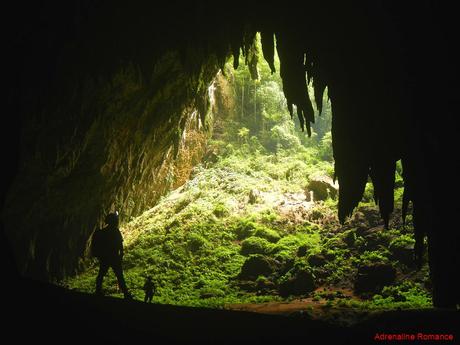
Human being’s notion of self-importance is a delusion. There are powers all around us that are far too massive for us to comprehend. We can feel the immensity of those powers when we face the full grandeur, the breathtaking beauty, the awesome might, the real danger, and the total indifference of Mother Nature. During our wonderful adventure inside Langun Gobingob Cave, the largest cave system in the country, we once again were privileged to experience that humbling and overwhelming feeling of awe and helplessness.
After spending an entire night of climbing an underground mountain, we slept fitfully in humid conditions in a cricket-infested campsite.
Time made no sense inside this dark realm. Sir Joni woke us up before 7AM, but it might as well be nighttime. The feeble lights from small candles and our butane lamp provided a scant protective bubble of illumination around us.
But breakfast was oh so good! It has been quite a while since we ate hot instant noodles, canned sausages, and corned beef for our morning meal.
While we packed up, we were startled by the sudden appearance of another man hauling a wire basket which he converted into a backpack. Mang Lando, another contact of Sir Joni, was going to accompany us to the very end. The other two younger porters who were hauling our camping equipment were to accompany us to the border of Langun Cave then go back to their homes in Barangay Panayuran. We won’t camp again anyway, so there’s no sense of them accompanying us the long way ahead.
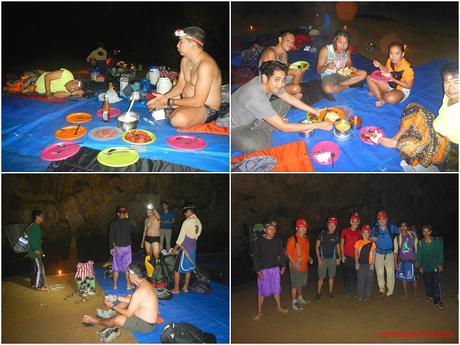
Those were our curious and annoying bed mates. Cave crickets are important creatures in the cave’s ecosystem; they are food for bats.
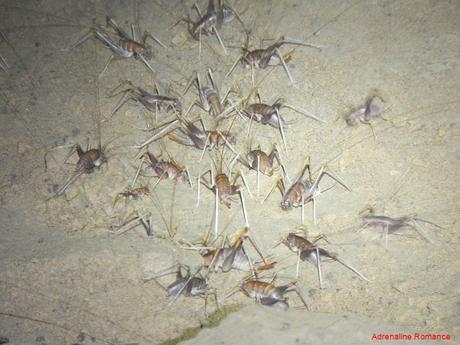
All set? We exited the Football Field and backtracked part of the way. Despite our excitement, we were still a little bit drowsy; the absence of light has somewhat messed up our circadian (sleep-wake) rhythm.
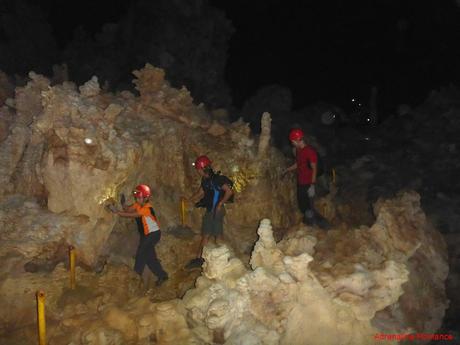
Oh, don’t say we’re going to climb an underground mountain again. Oh, yes! We need to climb it again albeit on the other side.
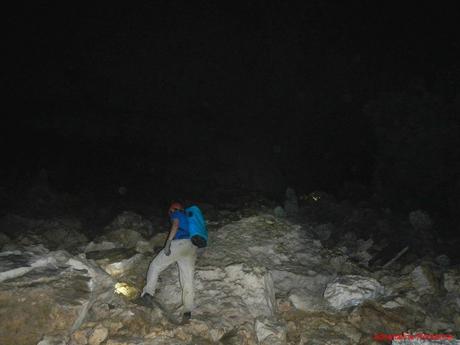
(Photo credit: Joni Abesamis Bonifacio)
The king of the cave! Sir Joni sits on a rock formation that looks like a great throne. It’s a fitting title as Sir Joni knows the Langun Gobingob cave system better than anyone else.

Shortly after reaching the throne, we started descending the mountain. Now, extreme care is needed here. Can you see the dark abyss below us? No one will survive if he or she takes a slip and plummets down into the depths.
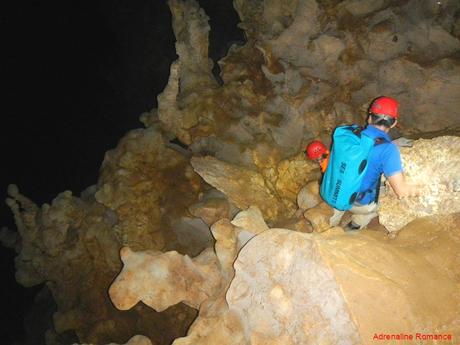
After some time, we arrived at this dead triple stalagmite. Sir Joni said that we were at the border of the Langun Gobingob cave system, and we have reached the tail end of Langun Cave.
To descend safely down this treacherous 40-meter 80-degree cliff, we needed to be tethered to a safety line. Sir Joni set up a double-redundant anchor system around these three stalagmites.
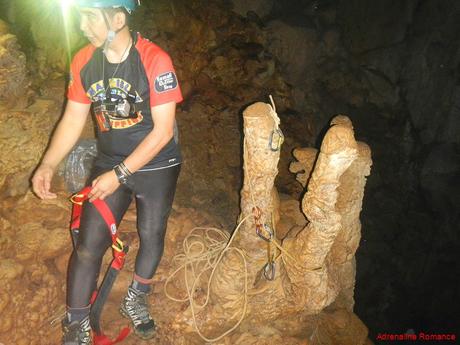
We held our breath in silent anticipation and nervousness as our local guides carefully clambered down the cliff without safety equipment of any kind! This is very dangerous; the small slope that Mang Lando is standing on is wet and extremely slippery.
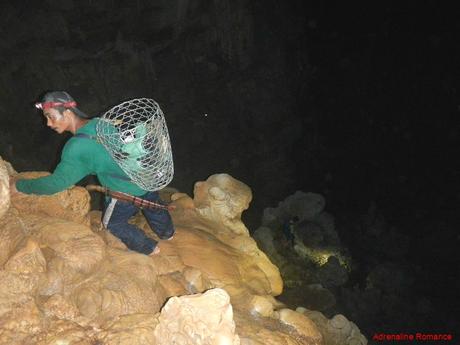
I was the first to descend this 40-meter cliff so I could help the others when they reach the bottom. Silently, I was ecstatic to know that there’s a teeny-weeny bit of rock climbing in this cave.
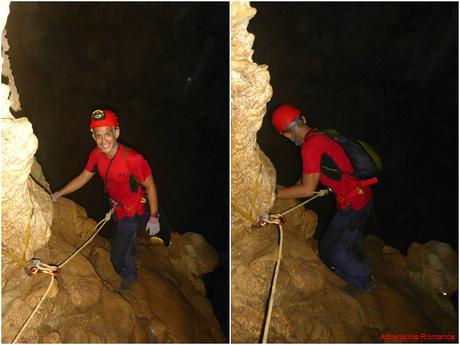
(Photo credit: Joni Abesamis Bonifacio)
Once I was safely down at the bottom of the slanted cliff, the others carefully followed suit. The descent was manageable, and even if any one of us has slipped, Sir Joni was belaying us from above. He could catch our fall.

(Photo credit: Joni Abesamis Bonifacio)
That’s the view from the bottom of the 40-meter cliff. See the bright but small circle of light at the top of the rock? That’s the light from Sir Joni’s headlamp. That should give you a good reference of the height of this cliff.
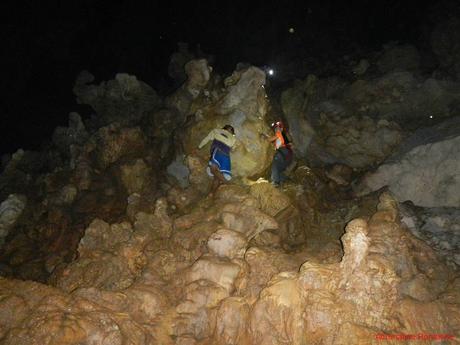
Whoa! Check out this really tall, really thin spire. It roughly resembles Burj Khalifa in Dubai, the tallest skyscraper in the world. Only this magnificent stalagmite is naturally made by water, earth, and mineral deposits.
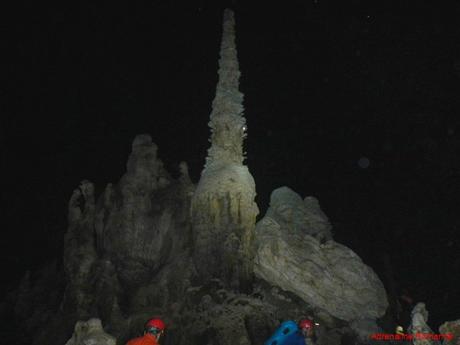
These irregular stalagmites look like strange trees from an alien planet. Each of them are as tall or taller than an average person. They are very delicate and care must be taken not to touch, hold, or bump into them.
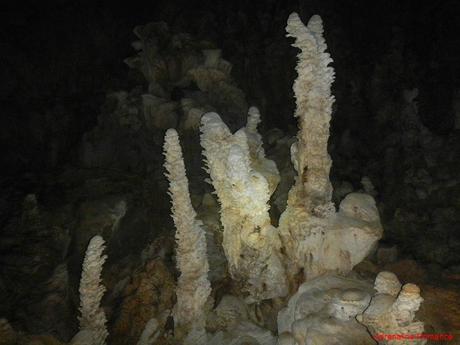
Judging from the possibility of a gigantic cave-in forming this underground mountain, these weird-looking stalagmites are most likely speleosiesmites. These are damaged speleothems that are believed to have been deformed by seismic events. The damage caused the formations to be twisted, crooked, or bent.

Although they have left their crystalline properties behind and have solidified into rock, these formations still look amazing and unearthly.
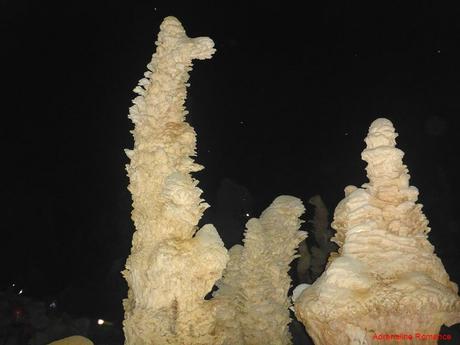
(Photo credit: Joni Abesamis Bonifacio)
We found these short, stout stalagmites really cute. They look like a forest of giant acorns. Also, check out the thin, bent speleosiesmites in the mix.
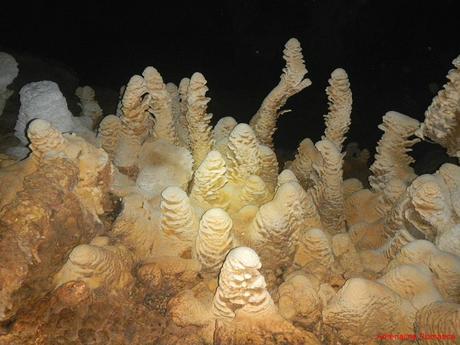
There were a lot of fan-like crystalline cave corals and helictites that we could feast our eyes in. This is one captivating cave, don’t you think?
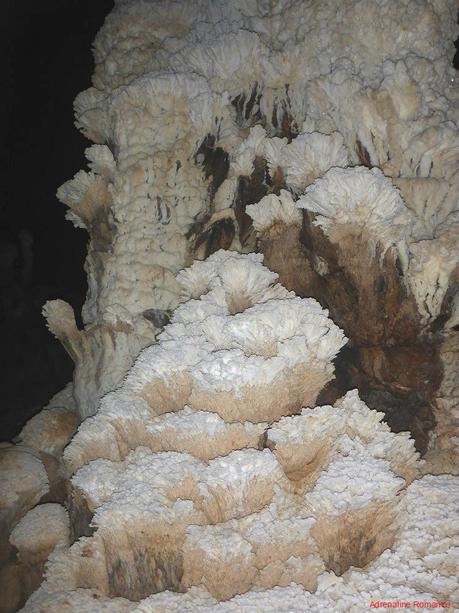
(Photo credit: Joni Abesamis Bonifacio)
Finally, we reached the bottom of the mountain, which features a clay-like floor much like the one in the Football Field. This is Tita Chamber, and this section harbors another wonder—a group of enormous chandeliers that act as monumental guardians of this section.
To give you an idea of just how huge and impressive these chandeliers are, check out the photo below with Sweetie standing in the middle of the cluster.
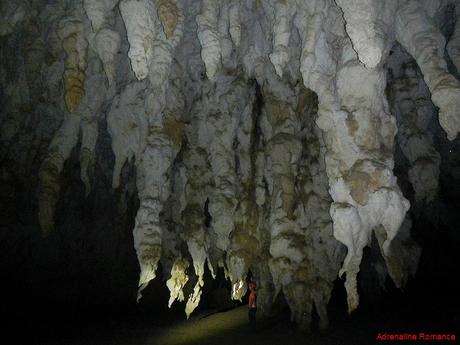
After Edgar took some nice photos, we proceeded on our underground journey. As we walked farther from the giant chandeliers, the chamber we were in seemed to grow increasingly expansive.
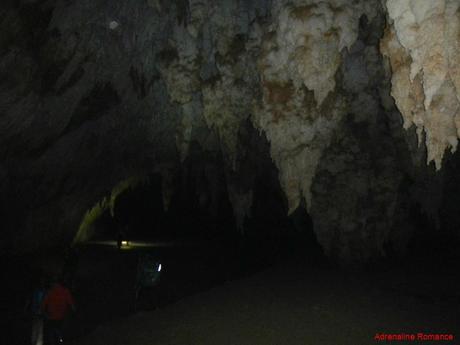
We entered a small opening, which led to a vast field of clay-like mud. We don’t have exact measurements, but we felt that it is as expansive as the entire tarmac of the Mactan International Airport! We kid you not! It’s so huge that our lights can’t even reach the ceiling and the opposite side of the cavern.
After two days in the cave, we finally saw beautiful, glorious daylight from this small opening.
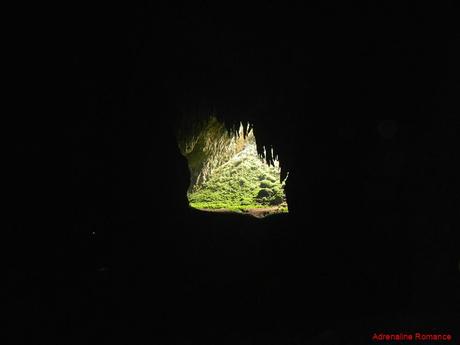
That small opening, however, was a clever optical illusion. As we walked closer towards the light, it became increasingly bigger until it soared at an impossible height. We have arrived at the titanic maw of Langun Cave. This is called The Mother of All Cave Chambers. It has a length of 400 meters, width of 90 meters, and a height of 120 meters.
Just to give you an idea of just how monstrous this cavern is, check out the lower left corner of cave in the photo below. See those totally insignificant blue and orange specs? Those are our team mates who went ahead of us.
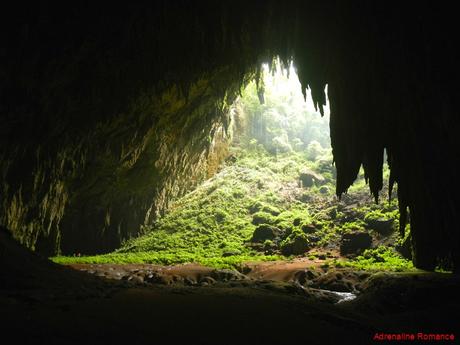
Looking back and with morning sunshine shining from the outside, we could clearly see the see the colossal stalactite-filled throat of Langun Cave—and where we came from. See dots of lights at the bottom of the photo? Those are the lights from some of our team members’ headlamps.
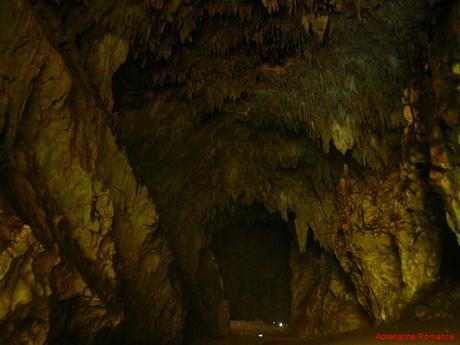
From afar, Sweetie walked across the mouth of Langun Cave. The slanted forest outside the mouth indicates that the entrance was revealed after a massive landslide. As time went by, trees and foliage grew on the remains of the landslide. It’s like seeing first-hand a lost world.
The opening to this lost world is so large that it could easily fit two helicopters flying side by side.
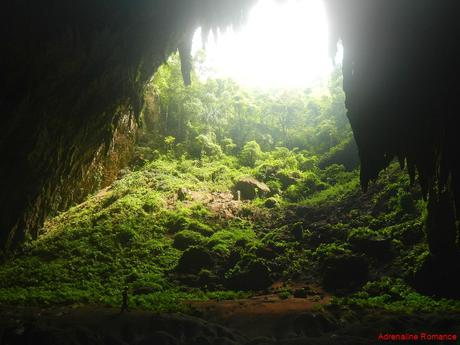
As we went closer to the entrance, the ground became softer and harder to walk on. In fact, we had to stop on our tracks and look for firmer areas. Otherwise, we would have sunk up to the knees in the extremely soft ground.
It turned out that we weren’t just walking on soil. This is actually a huge field of guano, or bat poop! No wonder why it smelled funny here. The guano serves as an ideal fertilizer for these wild ferns.
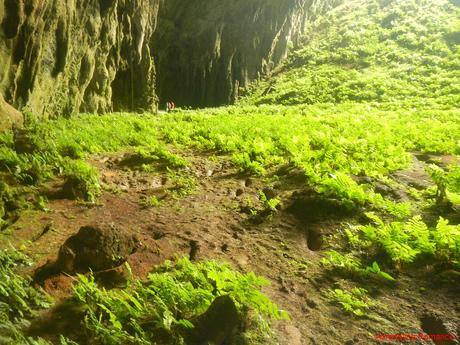
Hiding around these ferns are numerous poison ivy. Those innocent-looking leaves carry a compound called urushoil which causes severe irritation and can form painful blisters on areas of contact. Ladies, be careful where you pee in the wild or you’ll get a pretty ugly rash on your bum if you sit on one of these dreadful plants.
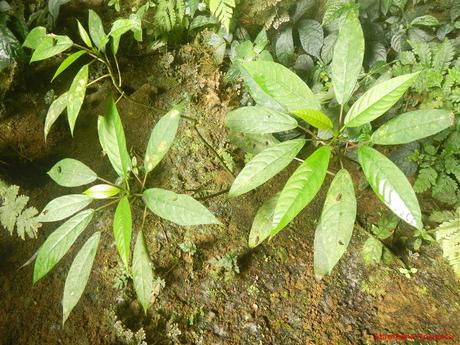
We came to a firm, green moss-covered clearing that served as a second campsite. We rested for a while and ate some snacks while waiting for Edgar and Rio who took photos of the gigantic natural wonder around us. They’re there somewhere.
See that dark, stalactite-covered cavern behind the campsite? That is the entrance to the Lower Langun area. Sir Joni said there are snake rooms, underground rivers, and waterfalls inside. We’ll save that for another day.
It is interesting to note that in 2009, an expedition led by Bruce Konefe, one of Asia’s top cave explorers, along with William Hudson and Thomas Bodis discovered a new underwater cave system here. Dubbed Lurodpon Cave, it was partially surveyed; they had to return due to lack of time and more sophisticated equipment. For sure, the team, together with Sir Joni, will be back again to explore this mysterious underwater cave further. Check out their amazing story here.
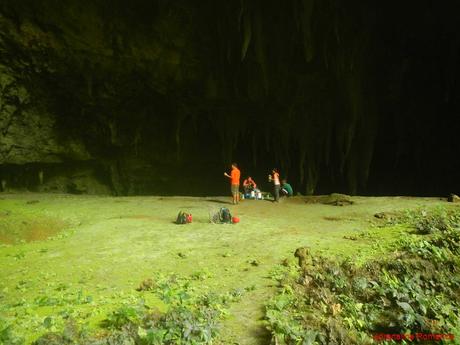
Oh, there they are! Can you see Edgar and Rio? Look at how tiny they are compared to this cavern.
The hundreds of giant stalactites above us provide safe, comfortable, and ample spaces for cave dwelling creatures such as bats, swallows, and swifts.
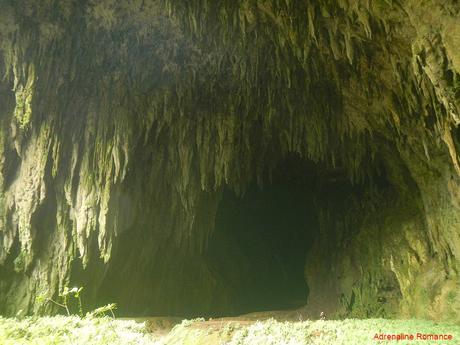
But caves can be hostile places for these avians even if they have adapted to such environment. This juvenile swallow didn’t pass the test of birdhood and fell to the cave floor when it failed to take flight. Most probably, it broke its leg or wing as it made impact with the ground.
Nature can be harsh and indifferent, and this little one is a victim of her cruelty. We can’t put it back to its nest hundreds of feet above us. Even if we somehow can, we have to put it in the right nest—one specific nest among thousands. If we put it in the wrong one, the mother swallow that owns that nest will just throw him out. In other words, this is a hopeless case. Sometime during the day, this poor bird will become a meal for snakes, wild cats, creepy crawlies, and other cave animals.
We wanted to help take the poor creature with us where it could be nursed to health and given a home. But we resisted that temptation because this is Mother Nature’s way. We just patted the little guy, took out the root that entangled his legs, and bid him farewell.

After a long rest, it was time to exit the cave and go home. We started climbing the slanted forest, taking care to steer away from patches of poison ivy. Sweetie still felt sad and sorry for the fallen swallow, but she knew we had to let it go.
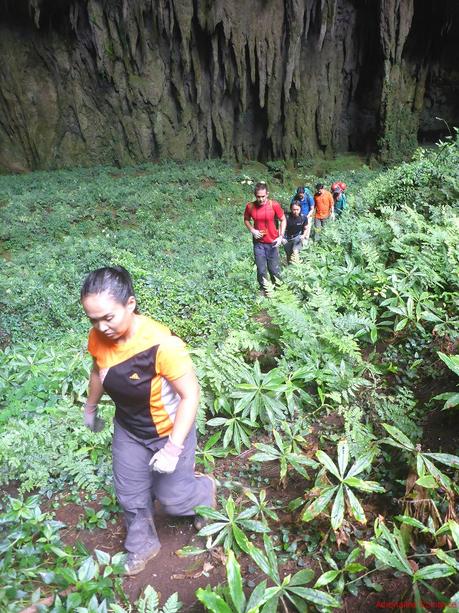
(Photo credit: Joni Abesamis Bonifacio)
We took a last look at the mouth of the massive monster hidden in this thick forest. Once again, at this point, it became deceptively ordinary, hiding the unimaginably beautiful wonders inside its belly.
We know we will be back again soon. There is still lower Langun Cave to explore.
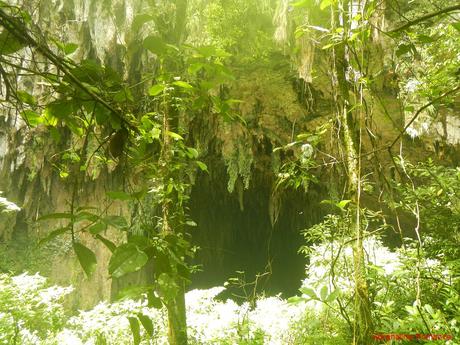
Our adventure wasn’t over yet, and this one was a bonus albeit an exhausting one. We took a long, circuitous trek up a mountain. The jungle trek, which first consisted of a steep uphill trail then a series of rolling terrain, took almost three hours to complete.
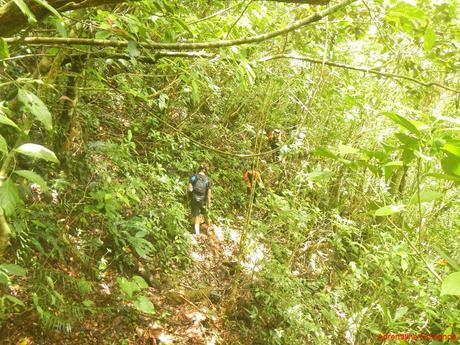
We were quite relieved when we emerged from the jungle and finally saw the surrounding vista of farms, villages, and towns. At long last, we were almost back to civilization.
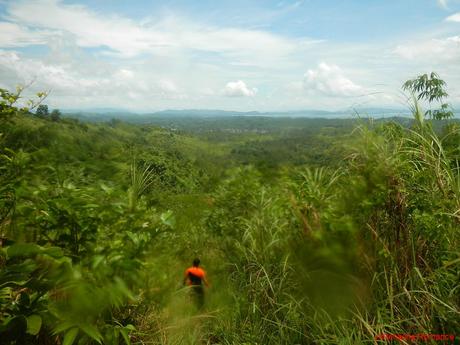
Our final stop for this adventure was Mapaso Spring, a cold spring that doubles as a water pumping station for the surrounding villages. It is the main source of water in the town of Calbiga and is a popular stop for locals who want to take a cool bath during a warm day.
We simply dipped ourselves in—clothes, pants, shoes, and all. The cool, refreshing spring-fed water felt so good as it washed away the dirt and sweat of our exhausted bodies.
After taking a thorough soap-less bath, we rode habal-habals that Joni contacted beforehand. It took us 15 minutes of riding on rough roads before we emerged back on the Calbiga highway.
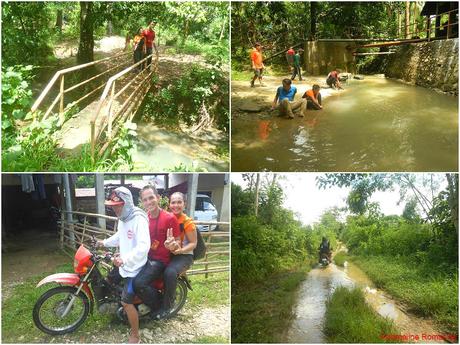
Our last stop was back in Rutchel’s Native Chicken Eatery where we left our stuff. After washing ourselves and changing into dry clothes, we had a super sumptuous and rewarding lunch of hot, spicy chicken tinola. It was the best chicken tinola we’ve ever had; they used native chicken rather than commercial broilers that are sold in supermarkets. The tinola was far more flavorful than most tinolas we tasted.
After a very satisfying lunch, Sir Joni presented us with our certificates together with a small token. Congratulations to us for accomplishing an exciting, adrenaline-pumping, and grueling 4-day caving adventure!
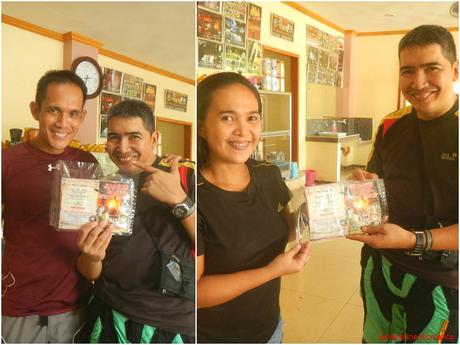
Special Thanks
Thank you very much to Sir Joni Bonifacio for letting us explore the stunning caves of Samar. Not only is he an an exceptional guide and host, he has become a cave creature himself. His amazing skill and long experience in navigating these rarely seen and visited wonders made our adventure safe, fun, exciting, and educational. You could not find a better cave master than Sir Joni.
Thank you to his wife, Rhine, for taking care of us during our stay and cooking us the delicious, nutritious meals we enjoyed during our caving adventures.
We would also like to thank the porters and the guides who assisted us and Sir Joni. You are valuable assets to our team, and we could not have these without you.
Lastly, we would like to thank Edgar, Luis, and Rio for joining us on this trip to Samar’s underworld. You guys definitely added a lot of fun! Here’s to more adventures and trips!
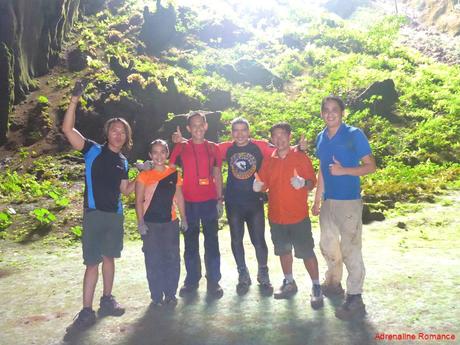
Seeing the immeasurable majesty of Mother Nature is always a humbling experience and a grand privilege for us. To see how huge, awesome, wild, and dangerous the Langun Gobingob cave system is, we relish in the belief that no one of us is really special.
We should not think of ourselves as higher forms of life; our thoughts of ourselves having a special place in the universe is a self-imposed illusion. We are simply animals living in this planet.
Our amazing 4-day caving experience in Samar instills in our souls that the world and all that is in it demand the highest respect.
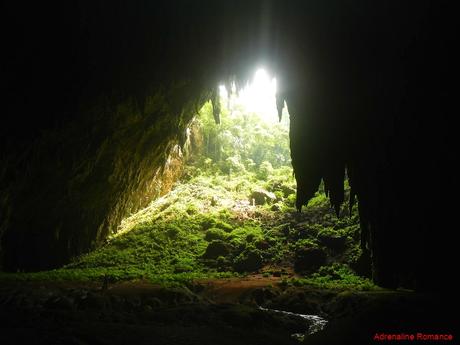
Itinerary
Day 3
11:00 AM – registration, shower, pack up, and prepare for departure
12:00 NN – lunch
1:00 PM- depart Trexplore
1:30 PM – ride bus from Catbalogan City to Calbiga
3:00 PM – arrive at Rutchel’s Native Chicken and Eatery, leave packs, snacks, last-minute preparation, wait while Sir Joni registers the team at the tourism office
4:30 PM – ride habal-habal to Barangay Panayuran
5:00 PM – arrival at jump-off, start trekking
5:45 PM – arrival at the Gobingob Cave viewing deck
6:00 PM – arrival at Gobingob Cave entrance, prepare equipment, briefing
6:30 PM – enter Gobingob Cave
7:30 PM – arrival at Football Field, set camp, dinner, rest for a while
8:00 PM – start cave exploration (Stage and climbing the underground mountain)
11:00 PM – return to Football Field, freshen up, change to dry clothes
12:00 MN – sleep, lights off
Day 4
6:00 AM – wake up, breakfast, pack up
7:30 AM – depart Football Field, climb underground mountain
8:30 AM – scramble down 40-meter cliff
9:00 AM – arrival at Tita Chamber
9:30 AM – arrival at Langun Cave entrance
10:30 AM – depart Langun Cave, trek to Mapaso Spring
1:15 PM – arrival at Mapaso Spring, freshen up
1:45 PM – ride habal-habal back to Rutchel’s Eatery
2:00 PM – arrival at eatery, change to dry clothes, lunch
3:00 PM – ride bus from Calbiga to Tacloban
4:00 PM – arrival at Tacloban bus terminal, snack,
4:30 PM – ride tricycle to airport
5:00 PM – arrival at airport, check-in, wait for flight to Cebu
Rates
- P 50 – bus (non-air conditioned) fare from Calbiga to Tacloban City
- P 150 per tricycle – tricycle fare from Tacloban Bus Terminal to Airport
Caving Rates*
- P 3,500 (USD 82) per person – 1-day caving adventure
- P 7,000 (USD 167) per person – 2-days/1 night caving adventure
- P 10,000 (USD 235) per person – 3-days/2-nights caving
* Rates are subject to change without prior notice. A down payment of 50% is required to confirm your booking (reservation fee is non-refundable nor transferable). Cancellation due to an unforeseen situation does not entitle you to a full refund. However, you have the option to reschedule your adventure at no added charges.
Considering the technical requirements needed for safety and for negotiating the tunnels and caverns of Langun Gobingob Cave, the rate is actually a very good deal. You will be equipped with top-quality equipment from Europe. You will be under the care of a highly trained cave master. Finally, there is a ton of inclusions that add value to your money. This unique experience has more value than a mere few thousand pesos.
Inclusions
- guide fee
- porter fee
- permits
- caving gear
- transportation (excluding transportation from Calbiga to Tacloban)
- food for the duration of your caving adventure
- caving certificate
- photo documentation
Notes
- A minimum of 2 persons is required to organize and commence the caving adventure.
- Anyone from 8 years old and above can do this adventure as long as they are reasonably healthy.
- First timers are welcome.
- For safety, the number of participants is limited to 10 per day.
- Caving is open all year round except during heavy or stormy weather.
Tips
1. No one knows these caves better than Joni Abesamis Bonifacio of Trexplore the Adventures. He is an extremely skilled and experienced cave master trained by top Italian and French speleologists. For caving guideship services, please get in touch with Joni using the following details:
- Mailing Address: Abesamis Store, Allen Avenue, Catbalogan City, Samar, Philippines 6700
- Cellphone Number: 0919-2943865 / 0927-6750062
- Landline: 063-055-2512301
- Email: [email protected] / [email protected]
- Website: Trexplore the Adventures
- Langun Gobingob Cave Facebook Page: Langun Gobingob Cave
- Trexplore Facebook Page: Trexplore the Adventures
In Catbalogan City, there are several inns and hotels where you can stay for the night. However, Sir Joni also has guest rooms right in his home. Check out the rates.
Air Conditioned Room with Private CR
- P 1,000 per room per night – 1 pax
- P 1,200 per room per night – 3 pax
Fan Room with Common CR
- P 200 per room
More tips to follow

